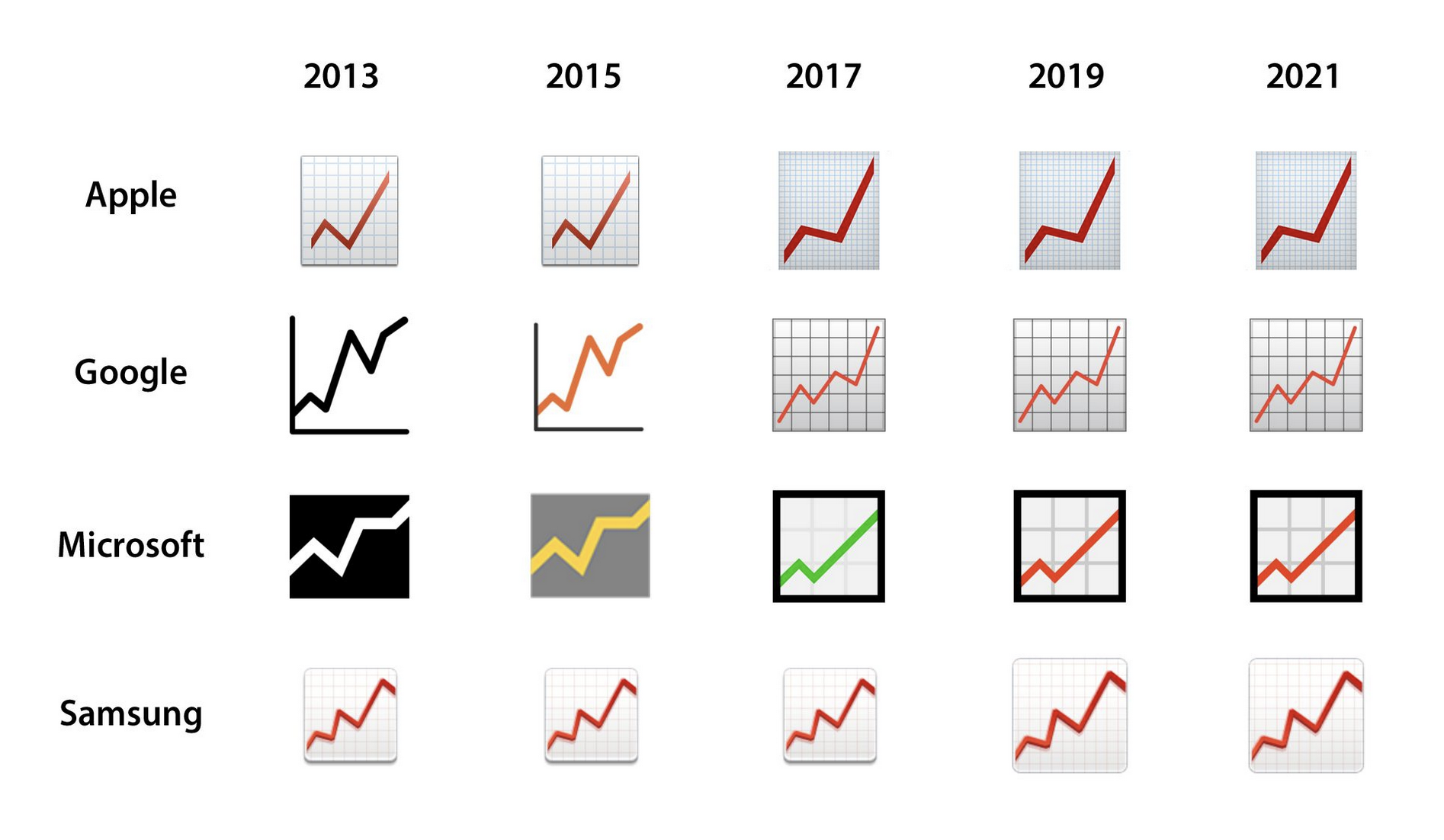Emojis and cultural differences
- Published at
- Updated at
- Reading time
- 1min
I've always been fascinated by Emojis for two reasons.
First, the cute Unicode glyphs are technically interesting. When I read about the nitty-gritty details of code points and Unicode planes, I'm always surprised that there's more to discover on how thing's work.
But secondly, the globally used symbols carry a strong cultural component. Think of it; Emojis are used globally by millions of people. And people are different. One Emoji can mean other things depending on the person looking at it.
The perceived meaning depends on the person's background and situation. Where are they from? How old are they? What device do they use?
One example is the "Increasing Chart" Emoji. I never noticed that the chart shows an upwards trending line that's confusingly displayed in red.
So why's that?
The reason is pretty simple: Emojis originated in Japan, and in Asian countries red is perceived as something good and green as something bad. The colors' meanings are flipped! 🤯
And now that we all use Emojis daily, we have to stick with the initial design to keep backwards compatibility. That's so fascinating!
If you want to learn more about this topic, check out the article on Emojipedia.
Join 5.8k readers and learn something new every week with Web Weekly.

